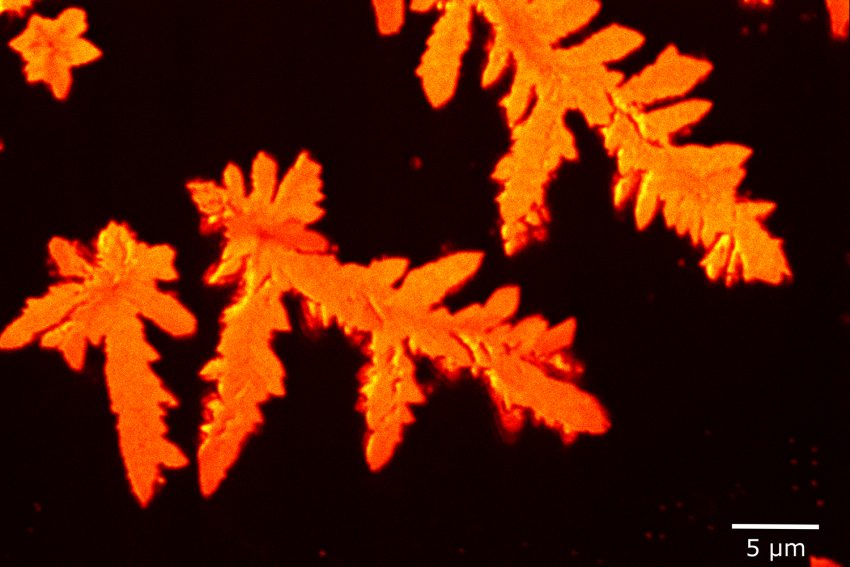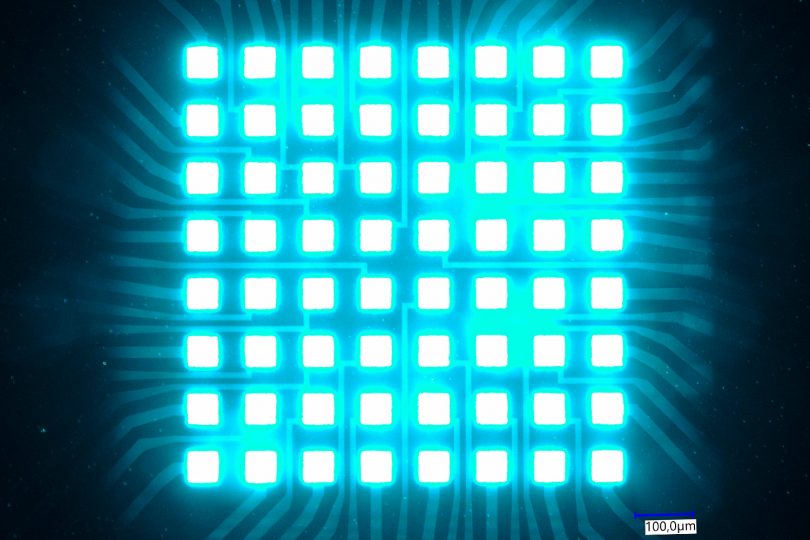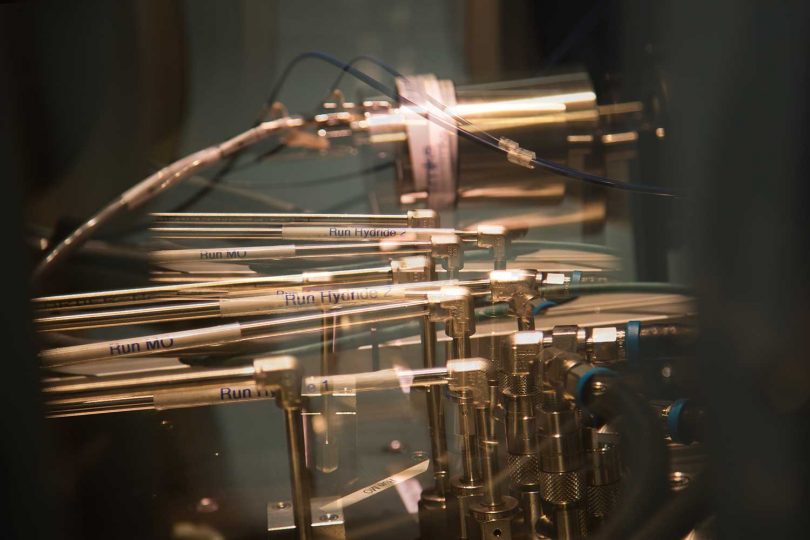This crystal is to become smaller Picture of the month from the Cluster of Excellence QuantumFrontiers
At this point, the object in our picture of the month is still clearly visible. But the scientists at TU Braunschweig are making progress. As part of the QuantumFrontiers cluster of excellence, they have the vision of isolating individual molecules from the glowing orange crystals and selectively processing them. Attached to semiconductor surfaces, these molecules are given an incredibly tiny yet crucial task: to emit individual particles of light, photons.

A work step on the way to single photon emitters: crystals of zinc phthalocyanine. Picture credits: Gunilla Harm/TU Braunschweig
As single photon emitters, these molecules represent the smallest possible form of a light source and send the smallest possible form of optical signals: one photon at a time. The emitters are highly prized as quantum technology: quantum computers, data transmission and the encryption of systems can make great leaps with their help. But their molecular scale makes single-photon emitters a challenging research task. Because the perfect emitter – stable, bright and reliable – has not yet been found.
As part of the QuantumFrontiers cluster of excellence, scientists at the LENA research centre are working on various approaches to realising the coveted light sources. One of them can be seen in our picture of the month. The picture of the orange crystal made of zinc phthalocyanine (ZnPc) shows one of the working steps from the Institute of Semiconductor Technology. Together with the Institute of Applied Physics and the Physikalisch-Technische Bundesanstalt (PTB), the researchers want to integrate individual molecules on semiconductor surfaces without causing undesired reactions. To do this, the ZnPc is first dissolved in a solvent in order to apply the dissolved molecules to the semiconductor. After the solvent has evaporated again, the scientists examine the luminous behaviour of the small crystals in order to better understand the molecular quantum emitter. This is exactly what you can see in our picture of the month. Only when the crystal and substrate harmonise well with each other can the researchers begin to produce smaller and smaller crystals. Until, piece by piece, they consist of only a single molecule.


